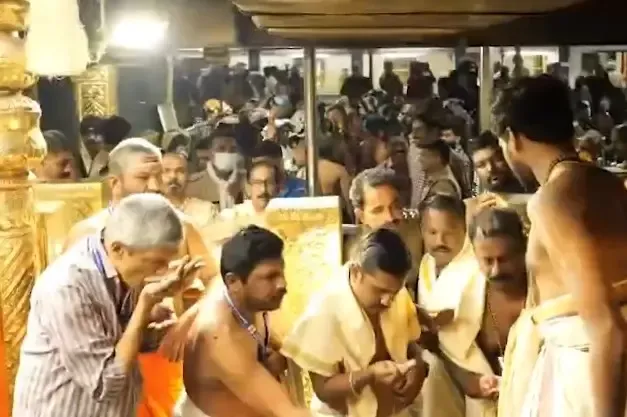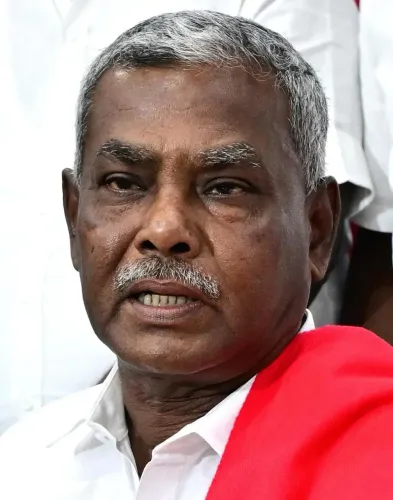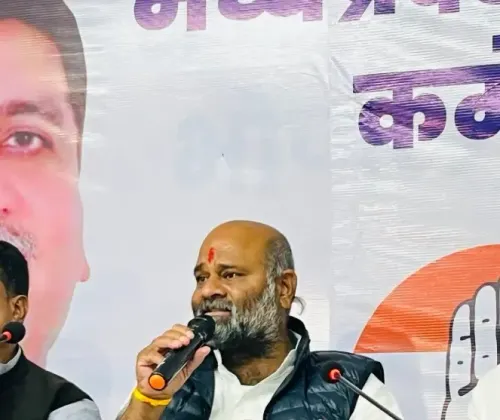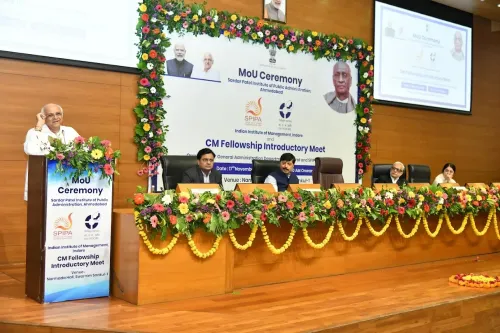Why is there a Heavy Rush in Sabarimala?

Synopsis
Key Takeaways
- Severe crowd mismanagement has been reported.
- Devotees are facing long wait times of 10 to 15 hours.
- Basic amenities like drinking water and food are lacking.
- Authorities have extended the forenoon session for better crowd management.
- Over 100,000 pilgrims have already visited since the shrine's opening.
Pathanamthitta, Nov 18 (NationPress) The two-month-long Mandala-Makaravilakku pilgrimage season at Sabarimala has commenced amid significant turmoil, with rising worries regarding crowd mismanagement, failures of essential services, and insufficient administrative readiness.
To accommodate the vast number of pilgrims on Tuesday, authorities decided to prolong the morning session by two hours.
Contrary to the claims of well-structured arrangements, reports from the ground and troubling visuals depict a different reality of prolonged wait times, water shortages, and weary pilgrims collapsing in queues.
Since the shrine opened for pilgrims on Monday, over 100,000 devotees have arrived, surpassing the daily darshan limit of 90,000 set by the virtual queue and spot booking systems.
Devotees are enduring waits of 10 to 15 hours to reach the sanctum as the flow at the 18 sacred steps has significantly slowed.
In order to regulate the crowd, at least 90 pilgrims should ascend the steps each minute, yet the current rate has dwindled to nearly half, causing serpentine queues stretching from Sannidhanam to the covered walkway.
K. Jayakumar, the newly appointed President of the Travancore Devasom Board, acknowledged that the arrangements have fallen short, noting that even on typical days like the second of Vrischikam, crowds have been unusually large.
He pointed out the lack of drinking water facilities, poorly maintained bio-toilets, and insufficient food supplies. Moreover, the Devaswom mess facilities are struggling due to logistical issues.
Many pilgrims, including children and elderly women, have fainted after standing for hours in congested areas without access to water or shade.
The absence of central forces such as NDRF and RAF, which are usually deployed for crowd management, has further strained the limited police presence.
Although over 18,000 police personnel have been allocated for the season, only around 3,500 have been deployed across Sannidhanam, Pampa, and Nilakkal.
The transit hub at Nilakkal has also experienced failures in crowd management systems, with a lack of barricades and insufficient KSRTC shuttles leading to jostling and confusion.
Reports indicate that the current situation mirrors the crisis seen in 2023, raising concerns that numerous Ayyappa devotees may have to abandon their pilgrimage midway if urgent corrective actions are not taken.
With foot traffic expected to surge on weekends and during peak festival days, the alarming situation necessitates prompt intervention and a thorough review of pilgrimage management strategies.









